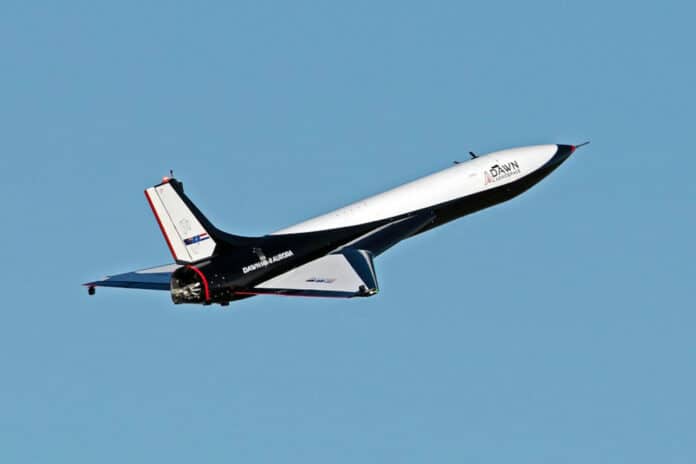Back in 2021, the Mk-II Aurora suborbital spaceplane, developed by Dawn Aerospace, completed its first test flights using surrogate jet engines. The New Zealand-based space company has now announced that its spaceplane successfully completed its first flights using an actual rocket engine.
This is a major milestone in the company’s mission to revolutionize space access as well and thus provide end-to-end space transportation.
The Mk-II Aurora is a reusable uncrewed technology demonstrator designed for aircraft-like operations and can fly multiple times a day. Unlike traditional rockets, Dawn vehicles take off and land horizontally on a runway and do not require a dedicated launch pad. Also, it is capable of carrying cargo, such as satellites weighing up to 250 kg.
These flight tests aimed to validate key systems and capabilities, such as the rocket engine, rather than striving for maximum speed or altitude. Future tests will gradually increase speed and altitude in a build-up approach.
During commercial operations, the Mk-II Aurora will fly to 100 km altitude, launching the payload into low-Earth orbit via an expendable second-stage rocket. It aims to become the first vehicle capable of such flights twice a day, laying the foundation for a fully and rapidly reusable first-stage booster.
The rocket test flights of the Mk-II Aurora took place at New Zealand’s Glentanner Aerodrome on the 29, 30, and 31 March. The craft was powered by a hydrogen peroxide/kerosene rocket engine for the test flights. Initial flights reached altitudes and speeds of approximately 6,000 ft (1,829 m) and speeds of about 170 knots (315 km/h).
“To have demonstrated rapid reusability in the first tests is proof of our core philosophy and confirmation that rocket-powered vehicles can be operated just like commercial jet aircraft. This fact allows us to rapidly test now, but in the future, it will completely revolutionize the economics of space access,” Dawn CEO Stefan Powell said. “These flights were a monumental achievement for Dawn Aerospace and the result of years of hard work from the team. After conducting three tests in three days, we believe Mk-II is the most rapidly reusable rocket-powered aircraft in operation.”
Upon the successful completion of the Mk-II Aurora program, Dawn Aerospace plans to develop the Mk-III, a two-stage orbital vehicle capable of carrying over 1 ton on a suborbital flight or delivering a 250 kg satellite to LEO with an expendable second stage.
“The vast majority of our industry’s carbon footprint is created in the manufacturing of rockets, not the fuel efficiency. Our orbital vehicle, Mk-III, is designed to be 96% reusable. This is key to delivering on our vision of a sustainable and future-proof space industry,” said Powell.
